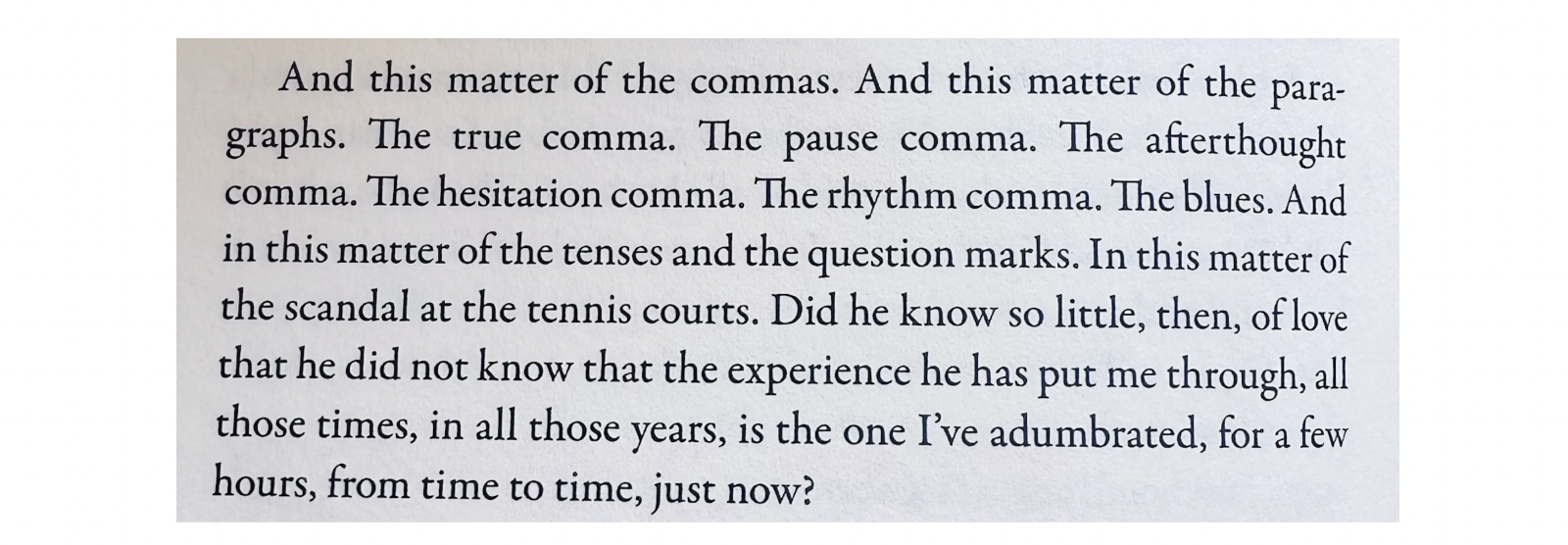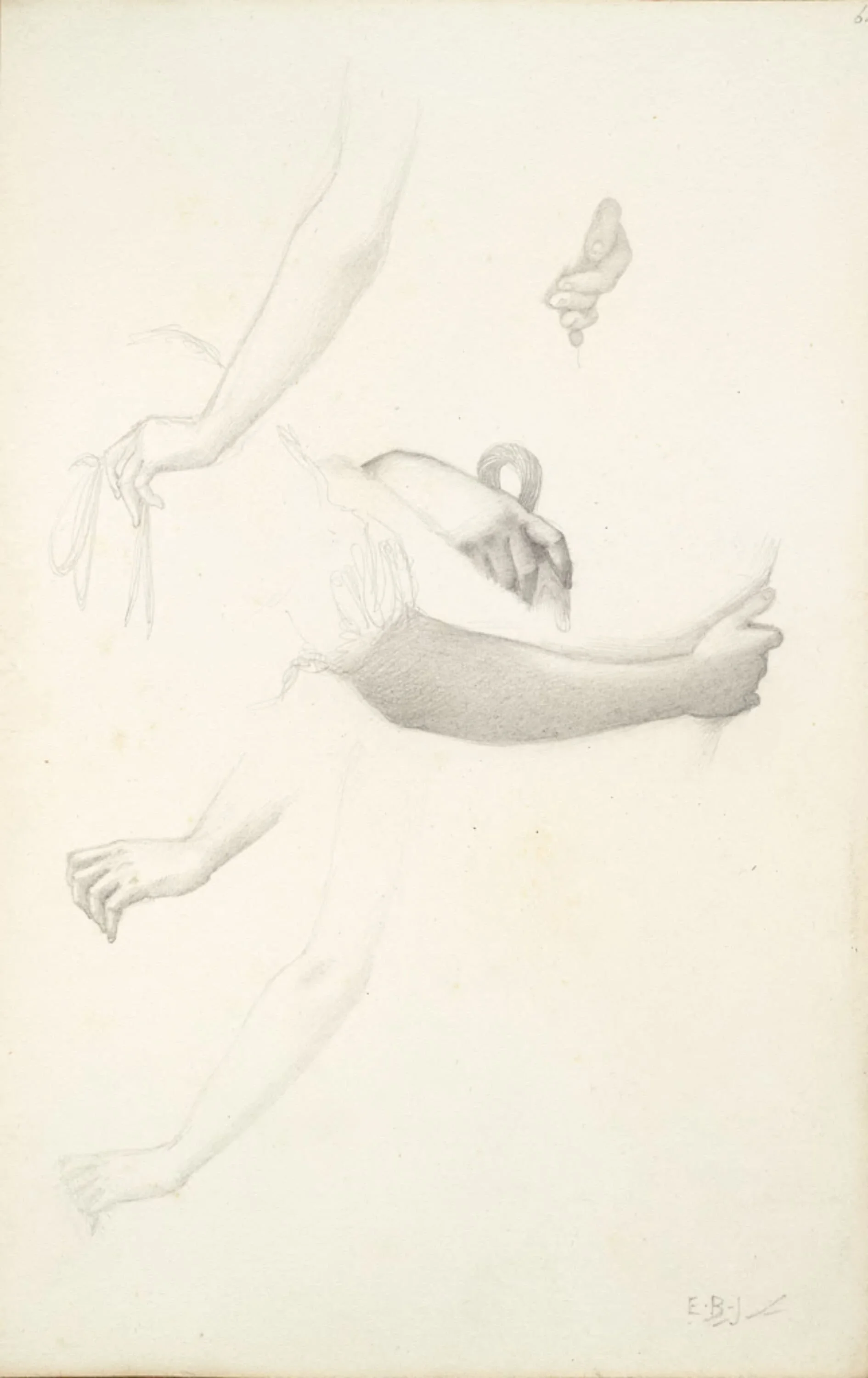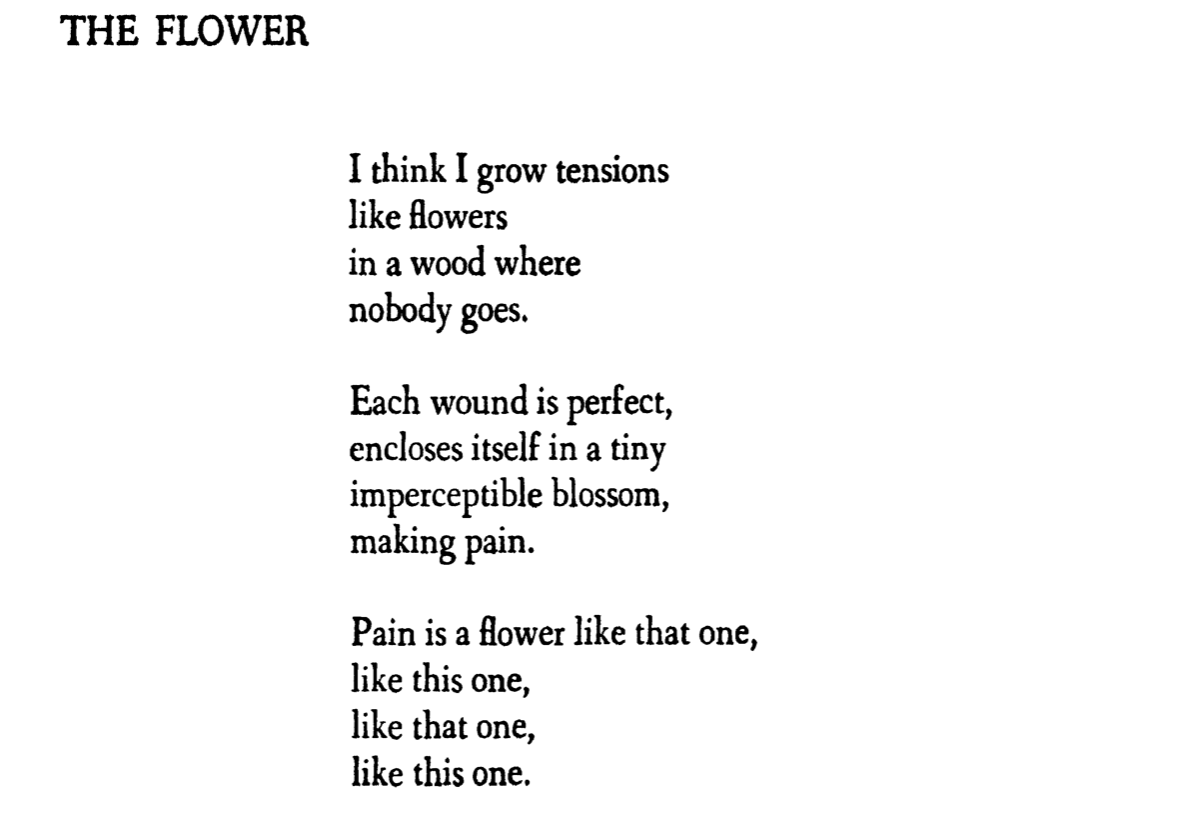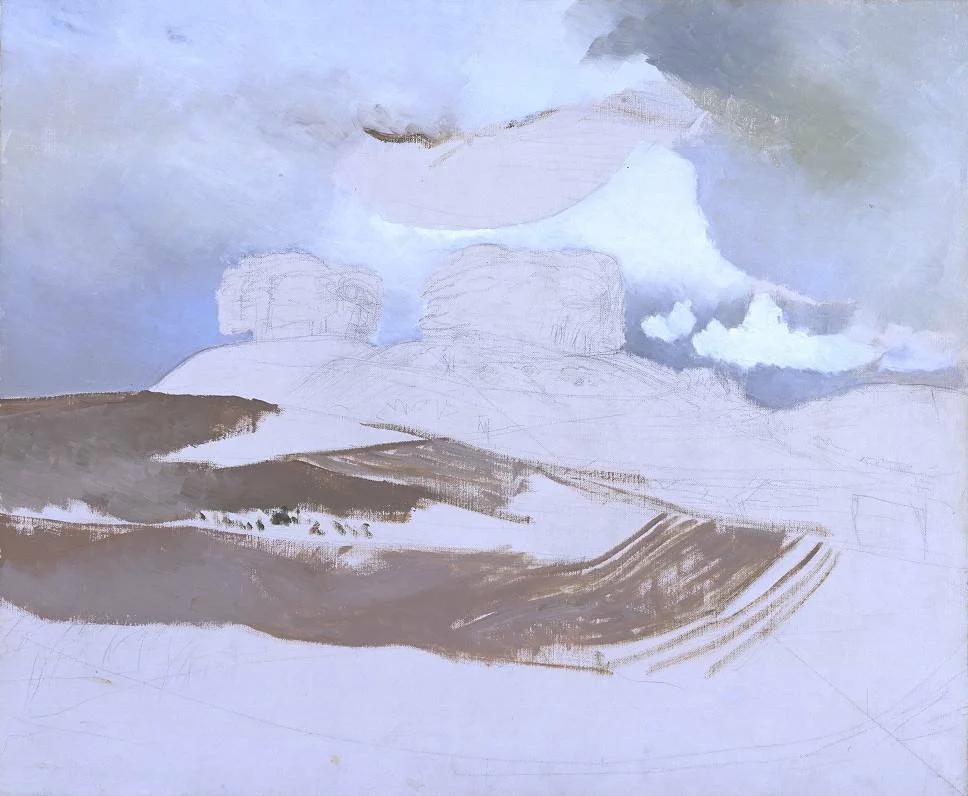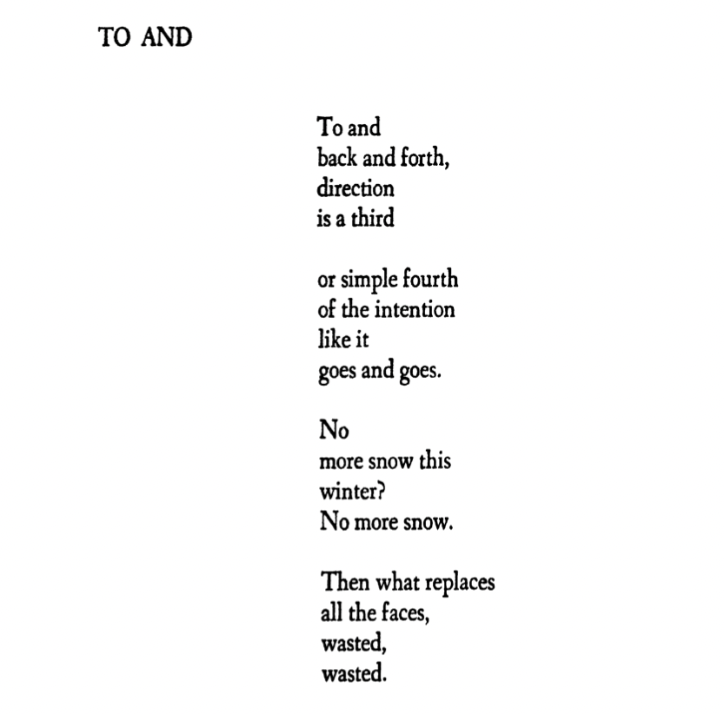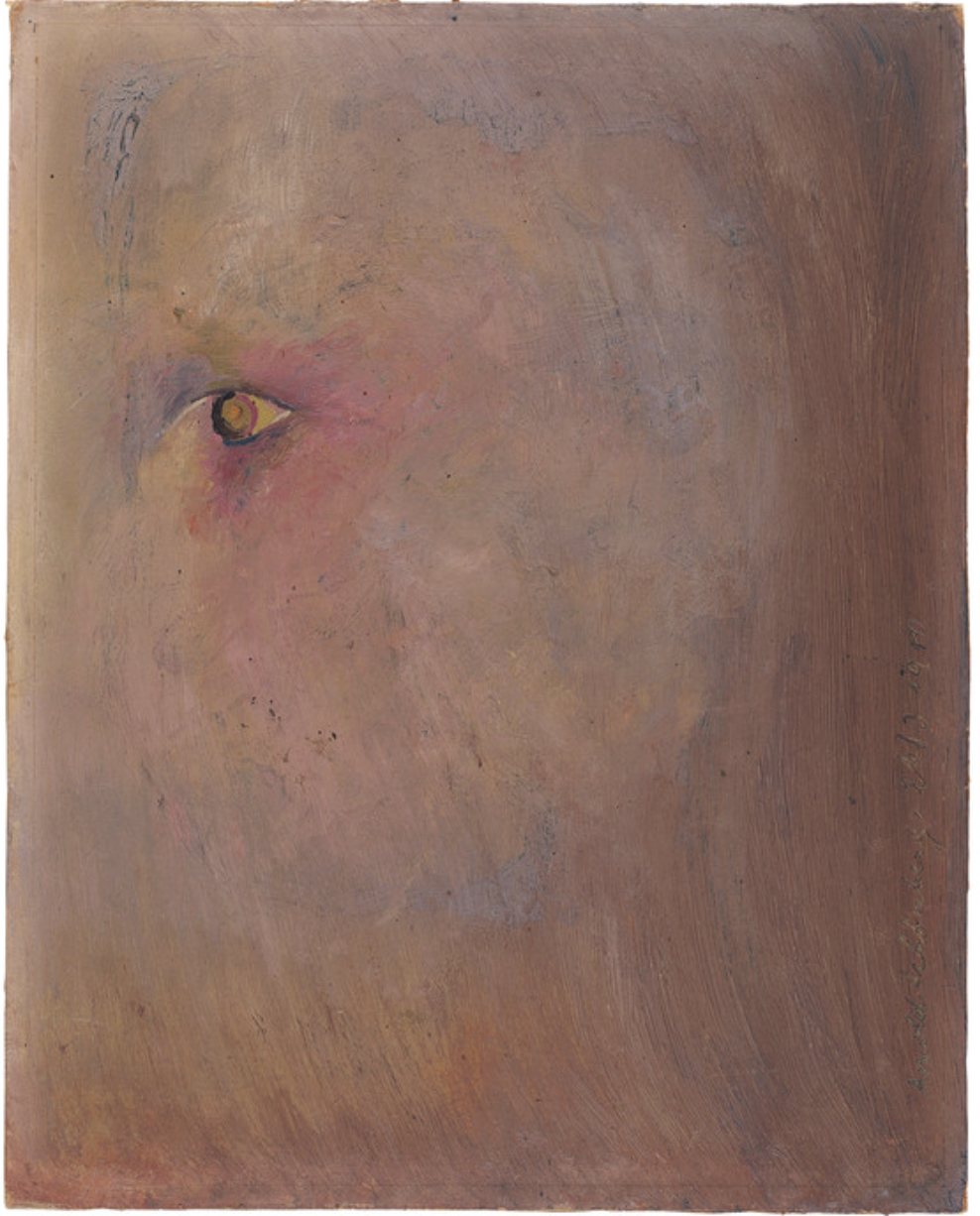The first week they wrote a letter.
He wrote it.
She thought about it.
Peace was in the house like a broken staircase.
— Robert Creeley, “The Interview”
What is the point. That is what must be borne in mind. Sometimes the point is really who wants what. Sometimes the point is what is right or kind. Sometimes the point is a momentum, a fact, a quality, a voice, an intimation, a thing said or unsaid. Sometimes it's who's at fault, or what will happen if you do not move at once. The point changes and goes out. You cannot be forever watching for the point, or you lose the simplest thing: being a major character in your own life.
— Renata Adler, “Brownstone”
1
“Where to begin.”
To quote Renata Adler.
To start with the favorite, or one of the favorites, or the favorite at 2:13 p.m. in the week of Robert Creeley’s For Love: Poems 1950-1960.
To refuse to think about these poems in the order they are given.
To choose, instead, the unscrupulous preferences of one’s own exuberance, one’s own tonalities, one’s own stammering speculations.
To be small, then. Small as this spare poem that spares us nothing.
A creature of three stanzas that reassures the extra line of its role as tiny ruiner. 3-3-4, the extra word.
The Rhyme
There is the sign of
the flower—
to borrow the theme.
But what or where to recover
what is not love
too simply.
I saw her
and behind her there were
flowers, and behind them
nothing.
To move into “The Way,” and notice the way a tone of conclusiveness undercut the speaker’s claims and abrades his putative ego.
To admire the riffing on Shakespeare’s famous sonnet, creating a dialogue with that particular strain of romantic bravado . . .
The Way
My love’s manners in bed
are not to be discussed by me,
as mine by her
I would not credit comment upon gracefully.
Yet I ride by the margin of that lake in
the wood, the castle,
and the excitement of strongholds;
and have a small boy’s notion of doing good.
Oh well, I will say here,
knowing each man,
let you find a good wife too,
and love her as hard as you can.
To go from this difficulty, this impossibility, with its “small boy’s notion of doing good,” back to the lake and the lack and the riffing on emblematic lines from poetry as a way into the poem:
The Bed
She walks in beauty like a lake
and eats her steak
with fork and knife
and proves a proper wife.
Her room and board
he can afford, he has made friends
of common pains
and meets his ends.
Oh god, decry
such common finery as puts the need
before the bed, makes true what is
the lie indeed.
”Laughter releases rancor the quality of mercy is not / strained,” as Creeley reminds in the droll seriousness of “The Crisis” — there is the collective resilience of laughter.
2
To see things differently in a white dress.
To admit the frame in the framing of it.
To move into the openly-sacrificial gesticulations of “A Marriage,” with its sombre tonality, an accomplishment of syntax and declarative hints.
To study the connotations and flexing of this legal word, retainer, even as it develops from the traditional “first time, second time, third time” punchline to the classic storyteller-style joke or else the fable:
A Marriage
The first retainer
he gave to her
was a golden
wedding ring.
The second—late at night
he woke up,
leaned over on an elbow,
and kissed her.
The third and the last—
he died with
and gave up loving
and lived with her.
To consider the trinitarian impulse in triples, and the human belief that magic occurs in numbers.
To be one two three about things.
To speak of pain in relation to form, where eternity is the duration of that see-saw between existence and penitence, as in “The Letter”:
The Letter
I did not expect you
to stay married to
one man all your life,
no matter you were his wife.
I thought the pain was endless—
but the form existent,
as it is form,
and as such I loved it.
I loved you as well
even as you might tell,
giving evidence
as to how much was penitence.
To feel slightly medieval when reading him.
To extend lais-like thought into something lighter. A gist in Creeley’s marriage and courtship poems reaching back loosely towards medieval fabliau (plural: fabliaux), that species of brief and bawdy tale that made use of satire to challenge clergy, women (as femininity), and marriage, wherein humor develops from plot through an intrigue or practical joke told in a rapid succession of events that form a single episode. Narrated in eight-syllable rhyming couplets, fabliaux were very popular in France during the Middle Ages. The effectiveness of the fabliau depends on the recognition of cultural cues and behaviors that point to easily discerned conceptions of human nature and gender. This type of literary form recurs throughout Chaucer's Canterbury Tales and Boccaccio's Decameron, where it is not limited to rhyming couplets. Clearly, Creeley isn’t playing the by the rules of the fabliau in these poems, but he seems familiar with the form, perhaps culling its rhetorical strategies when drafting poems like “A Marriage.”
To stand back from the particulars.
To glance downwards with the eye of the bird, noting how his use of adynaton, the “not possible,” lays bare love’s rhetorical strategies and hyper-magnifications. Say my love burns like a hundred suns. Say heart throws itself into the headlights. Say my superlatives stack up in his “Ballade of the Despairing Husband”:
Oh lovely lady, morning or evening or afternoon.
Oh lovely lady, eating with or without a spoon.
Oh most lovely lady, whether or dressed or undressed or partly.
Oh most lovely lady, getting up or going to bed or sitting only.
Oh loveliest of ladies, than whom none is more fair, more gracious, more beautiful.
Oh loveliest of ladies, whether you are just or unjust, merciful, indifferent, or cruel.
Oh most loveliest of ladies, doing whatever, seeing whatever, being whatever.
Oh most loveliest of ladies, in rain, in shine, in any weather.
Say any working-poet can sympathize with the rhyming couplet that concludes this “Ballade”:
Oh lady grant me time,
please, to finish my rhyme.
3
To consider the way he uses a comma.
To push his commas away and look for the sharpened points of his periods.
To say: if you.
To think: if then.
To read “If You” closely as if to resolve whether the repetition can offer closer.
To mean: I’m not sure how I feel about the repeating couplet that book-ends the conditional.
To admire the poem’s construction from a simple conditional, where the marital crisis involves a pet . . . and the bow touches the violin in the second-to-last couplet, with the crisp serial of monosyllabic words:
Dead. Died. Will die. Want.
Morning, midnight. I asked you
if you were going to get a pet
what kind of animal would you get.
To know and not know.
4
To study the material, itself.
To consider Robert Creeley’s intent when he said: “Things continue, but my sense is that I have at best, simply taken place with that fact... So it is that what I feel, in the world, is the one thing I know myself to be, for that instant. I will never know myself otherwise. Intentions are the variability of all these feelings, moments of that possibility. How can I ever assume that they come to this or that substance?”
To be apprehended by the mirror on the stream’s reflective surface in “The Awakening" —like the smallness of the man rubbing the myth from his eyes, reckoning with seeing “his size with his own two eyes” in the dark water.
To move through the locutionary ache of “The Tunnel,” with its variations and degradations of loneliness and echo . . . “time isn’t.”
The Tunnel
Tonight, nothing is long enough—
time isn’t.
Were there a fire,
it would burn now.
Were there a heaven,
I would have gone long ago.
I think that light
is the final image.
But time reoccurs,
love—and an echo.
A time passes
love in the dark.
To note how three returns in the tunnel’s structure: those three stanzas doing the work of completion, not by ordinary standards but through the sleight-of-hand that evokes our inarticulable expectations.
To see these threes in Creeley’s heroes.
To note this three-stanza poem, each quatrain quivering with Creeley’s extraordinary enjambment, the way he imposes rupture within a breath, where imposing plays into “possibility,” and reminds the reader of its kinship with the pose, which is to say, the hero, the poet, the sibyl, the speaker, the meteoric mythos:
Heroes
In all those stories the hero
is beyond himself and into the next
thing, be it those labors
of Hercules or Aeneas going into death.
That was the Cumaean Sibyl speaking.
This is Robert Creeley, and Virgil
is dead now two thousand years, yet Hercules
and the Aeneid, yet all that industrious wis-
dom lives in the way the mountains
and the desert are waiting
for the heroes, and death also
can still propose the old labors.
No heroes can rest without imagining the singular. Even if the singular only exists as a frame for the lack that imagines a partner.
The logic of lack commits “Heroes” to a pseudo-companion, a poem titled “The Hero” — the first stanza smattered with internal slant rhymes that create a beat or sense of motion, as in:
Each voice which was asked
spoke its words, and heard
more than that, the fair question,
the onerous burden of the asking.
And then further, in the same poem, once again, there is the suppleness of Creeley’s enjambment, the fractures of motion he uses to build these discrete stanzas, carriers of framed images:
Go forth, go forth,
saith the grandmother, the fire
of that old form, and turns
away from the form.
To study what form solicitates.
To sit on his simple hill and be aware of its shape:
5
To sit on that hill for hours with my dog, Radu.
To spy another hero in the valley from these heights.
To then descend, headily, into the transposition — or the images recollected, the outlines composed by Wallace Stevens in that extraordinary poem titled “Examination of the Hero in a Time of War” —
It is not an image. It is a feeling.
There is no image of the hero.
There is a feeling as definition.
How could there be an image, an outline,
A design, a marble soiled by pigeons?
The hero is a feeling, a man seen
As if the eye was an emotion,
As if in seeing we saw our feeling
In the object seen and saved that mystic
Against the sight, the penetrating,
Pure eye. Instead of allegory,
We have and are the man, capable
Of his brave quickenings, the human
Accelerations that seem inhuman.
To wonder (again) about the concept of “innate music” in poetics.
To re-read a letter written by Wallace Stevens in 1936, when he was working on “The Man With the Blue Guitar,” and theorizing the imagination’s influence.
To read the words of Stevens’ letter aloud in the room of this instance, this Now.
“The validity of the poet as a figure of the prestige to which he is entitled, is wholly a matter of this, that he adds to life that without which life cannot be lived, or is not worth living, or is without savor, or in any case, would be altogether different from what it is today,” said Stevens.
To pause and look up at the overwatered house plant.
To return to Stevens’ letter, and resume my chlorophyll-adjacent reading: “Poetry is a passion not a habit. This passion nourishes itself on reality. Imagination has no source except in reality, and ceases to have any value when it departs from reality. Here is a fundamental principle about the imagination; it does not create except as it transforms. There is nothing that exists exclusively by reason of the imagination, or that does not exist in some form in reality. Thus reality = the imagination, and the imagination = reality. Imagination gives, but gives in relation.”
To acknowledge the italics above as my own — just as this relational imaginary, wherein imagination alters the relations we form with experience, and this alteration is what we carry forward as influence, belongs (somehow) to Stevens.
And to end with perhaps a favorite —
6
— followed by a talisman, a mirror, an echo.
A Token
My lady
fair with
soft arms, what
can I say to
you—words, words
as if all
worlds were there.
— Robert Creeley
When it happens you are not there
— W. S. Merwin, “To the Words”
And you my future constellation
climb up in the sky with me
— Morphine, “Like a Mirror”
To Make a Cento of It
“I’m thinking of that charming phrase: what goes around comes around.”
— Robert Creeley to Bruce Comens
i
House. Your hand is an iron
shovel looking down at me.
Night comes. We sleep.
In hell we will tell of it.
ii
The door to the pantry
in Virgil’s plan is a poem
for the ways of water.
All eyes as if talking — taking
always the beat from the
breath it must have been.
Yielding manner as
simply as that syntactic
accident. The moon
is white in the branches
as we climb the hill for our picnic
I see a face appear.
Kenneth Patchen is hunting deer
inside Russia, too far from
me. . . the nightmare.
You on your back with your
Robert Creeley.
iii
Viz: hey.
Nothing for You is untoward.
Tree, speak. I will be a romantic.
I will sell her hands, her hair, her eyes, all things time isn’t—
cruel instrument.
iv
It is a viscous
form of self-
like flowers
thrown under
their colors.
What I took in my
hand: a man,
a direction — I am.
All beggar.
As if all that
surrounds her
as hair be also
today — a double
flute. To
walk
at night.
The trees — goddamn
them, the galloping
collection of greens,
subservience. I am.
All ears.
Be for me
like rain—
a being nothing
and there.
v
At night, there are other things white in the mind of it.
I took in my hand the possibility cut so small in the wall where you spoke to me.
Were there a fire it would burn now for the sake of the tree.
*
Arnold Schoenberg, Red Gaze (1910)
Bruce Comens, “A Conversation with Robert Creeley by Bruce Comens” (The Review of Contemporary Fiction, Fall 1995)
Edward Burne-Jones’s sketchbook (Harvard Art Museum)
Max Richter, “Psychogeography”
Morphine, “Bo’s Veranda”
Morphine, “Like a Mirror”
Renata Adler, Pitch Dark (NYRB Classics)
Robert Creeley, For Love: Poems 1950 - 1960 (PDF)
Robert Creeley, “To Say It”
W. S. Merwin, “To the Words”
Wallace Stevens, “Examination of the Hero in a Time of War”



